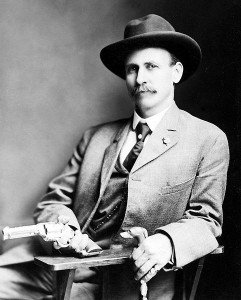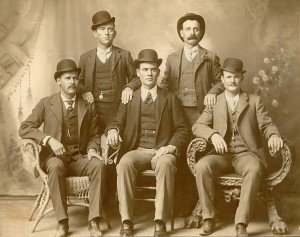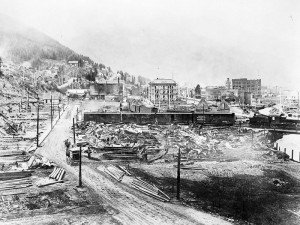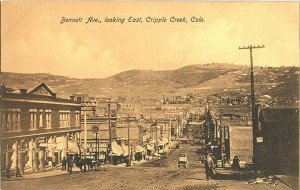Trips Into History explores the old west and in particular a Pinkerton operative of the late 1800’s. A name that may not come up as often as it should is that of Charlie Siringo.Charlie Siringo was involved in old west law enforcement as much or maybe more than familiar names such as Pat Garrett, Wyatt Earp and Bill Tilghman.
Thank you for reading this post, don't forget to subscribe!Charlie Siringo while Charlie Siringo gained much of his fame, and spent twenty-two years at it, as a detective for the Pinkerton National Detective Agency. This was the detective agency started in the mid 1800’s by Allan Pinkerton, a one time bodyguard for Abraham Lincoln, that some called “America’s Scotland Yard“. It has been written that Pinkerton had as many as 2,000 detectives on the payroll and some 30,000 in reserve. This was a total larger than the U.S. standing army during the era.
 Charlie Siringo was a onetime Texas cowboy, a Pinkerton detective and the author of some thirty books. Many would say that Charlie Siringo molded the cowboy image as it applied to private detective work. He worked largely in the era where a Pinkerton operative acted as a sort of quasi-lawman.
Charlie Siringo was a onetime Texas cowboy, a Pinkerton detective and the author of some thirty books. Many would say that Charlie Siringo molded the cowboy image as it applied to private detective work. He worked largely in the era where a Pinkerton operative acted as a sort of quasi-lawman.
From Cowboy to Detective
Charlie Siringo who was born in south Texas was looking for adventure. He moved to Chicago and because he could furnish several good references, one reportedly being from none other than Pat Garrett, Charlie Siringo was able to get a job with the Pinkertons in 1886. His hiring was also brought along by the fact that the Pinkertons were in the market for a “cowboy detective“. Western cattle ranches were in their heyday and the Pinkertons were busy. This was fine with Siringo since he had little interest in working in the east. He was destined to be assigned to Pinkertons Denver office.

Before that occurred however, Siringo would find himself involved with the Haymarket Riots in Chicago. What is referred to as the Haymarket Riots was a lethal labor altercation with anarchist overtones. It ignited with a bombiing that killed Chicago policeman. This was one of Chicago’s largest labor disputes only to be eclipsed by the violent Pullman Strike during the 1890’s financial depression.
Eventually Charlie Siringo did make his way west with the Pinkertons working out of their Denver office as an “operative“. That was the term used to describe the Pinkerton detectives. Back again in the west, Siringo was put to work in a variety of the things.
Chasing Rustlers, Thieves and Outlaws
Siringo was said to have worked for the Pinkertons as far south as Mexico and as far north as Alaska. This must have worked well for the man that disliked desk jobs. It’s also been noted that Charlie Siringo worked undercover a good deal which was something fairly unique for the late 1800’s.

Siringo was present in Dodge City Kansas when Wyatt Earp allegedly had his confrontation with Clay Allison. Charlie Siringo also provided the information for the capture of the wanted outlaw Kid Curry whose real name was Harvey Logan and was a member of the infamous “Wild Bunch Gang“.
Siringo also did work for the Pinkertons on behalf of the railroads. The railroads were big customers of the Pinkertons. One case involved theft from a railroad in Texas. Siringo’s work on this case covered both Texas and across the border into Mexico. The case was solved when Charlie Siringo found the guilty culprits to be the railroad’s own general manager along with some of the passenger conductors. This most likely was another undercover operation that Siringo proved so good at.
The Bloody and Violent Coeur d’ Alene Strike
Probably because of his experience with the Haymarket Riots in Chicago, Charlie Siringo was trying hard not to get involved with his company’s assignments in Idaho on behalf of mine owners. He had been working in Denver at the time doing what he referred to as ” city work“. His preference was to work out in the open. Away from the office. City work was much more confining. Working out in the open let Siringo escape the heavy oversight of the Pinkerton office. The labor unrest in Idaho would eventually allow Siringo get out of the office. Charlie Siringo probably thought this was both good and bad.
During the national financial downturn of the early 1890’s, Idaho miners wages were cut and strikes and violence soon erupted. It’s important to note that just about every labor dispute in the late 1800’s and early 1900’s had to do with cut wages and hours. Unionizing was in full swing. The Pinkertons were hired by the mine owners to try to infiltrate the union and learn of their plans.
Charlie Siringo, probably as a result of his Haymarket Riots experience, developed a hatred for anarchists but at the same time he was sympathetic toward miner’s grievances. In many respects he was a man in the middle. Although this was work away from the office, Siringo didn’t want this Idaho assignment. After coaxing and pressure from Pinkerton and the Mine Owners Association, he agreed to accept the assignment. His job would be to pose as a mine worker at the Gem Mine in Wallace Idaho, work alongside the miners, and try to gain as much information about union activities as he could.

The mine owners were trying to bring scab labor in by train. The workers and union organizers became aware and were determined to stop it by any means necessary. In one instance a trainload of scab workers was on the way and the miners in Wallace Idaho were preparing for the confrontation. Siringo learned of this and was able to tip off the mine owners who then ordered the train to proceed straight through Wallace without stopping.
Charlie Siringo eventually lost his cover and was a prime target of the union. Fortunately for the mine owners and for Siringo, the U.S. military was sent in to restore order. Charlie Siringo, by request of the military, pointed out the union leaders and they were rounded up by Siringo and others. They were placed in what was called at the time the “bull pen”. It’s important to note that Siringo pointed out the union leaders who in his judgement were the troublemakers. The ones inciting the workers. Not all of the union men fit that category. By the same token he pointed out mine managers who in his judgement aggravated the situation and in some cases incited the violence. This again was an example of Siringo’s sympathy for the plight of many workingmen even though he served at the behest of the Pinkertons and the owners.

The outcome of the Couer d’ Alene Strike was the 1893 formation of the Western Federation of Miners which was considered a radical union operating in the Western mining states. It would be nice to think that things settled down but trouble again flared in the late 1890’s and once again U.S. troops were brought into Idaho to restore order. The federal troops didn’t leave the area until 1901. Labor unrest was still a big issue. Violent miner strikes cropped up later in Colorado during the early 1900′s and, there too, the Western Federation of Miners were the unionizing force.
See our additional Trips Into History articles on the Pinkertons and Jesse James and the early 1900’s miners strike and Mass Deportation in Bisbee Arizona.
Charlie Siringo the Author
Charlei Siringo left the employ of the Pinkertons in 1907. Just like Allan Pinkerton he decided to write about his experiences. The Pinkertons however felt that Siringo was violating their confidentiality agreement and court hearings held things up for a few years.Eventually, Charlie Siringo agreed to delete the use of the Pinkerton name in the book titles and that settled the matter.
There were basically four themes that Siringo wrote about. These were, his youth and life as a cowboy, Billy the Kid who he had both known and chased, his twenty-two years as a Pinkerton operative, and the outlaws with whom he had come in contact with. In addition to the above, Siringo worked as an advisor in Hollywood and even had a few bit parts.
Siringo’s writings about his many years with the Pinkertons caused a bit of a stir. The Pinkerton Agency initially blocked Siringo’s writings citing the confidentiality agreement all Pinkerton operatives signed. After a few years the two sides reached an agreement and Siringo kept the “Pinkerton” name out of his book titles.
Charlie Siringo happened to live in an era of great change. It was the last years of the frontier, the industrializing of America, and the start of a new century. Other notables that lived through this era were Annie Oakley, Buffalo Bill Cody, Theodore Roosevelt, Wyatt Earp and of course many others. What I find interesting is how these memoirs, written later in life, seem describe a time that is fascinatingly different than the twentieth century. The change during the years of about 1880 to 1915 was dramatic. According to the U.S. Census Bureau, the frontier officially ended in 1890. By the year 1910 people were starting to drive automobiles obtaining their horsepower from internal combustion engines fueled by gasoline. How times changed.
Books About and By Charlie Siringo
Among the books I’d recommend to explore more about the life of Charlie Siringo include…Charlie Siringo’s West: An Interpretive Biography by author Howard R. Lamar. Also, A Texas Cowboy by Charles A. Siringo and A Cowboy Detective: A True Story of Twenty-Two Years With A World Famous Detective Agency by Charles A. Siringo.
